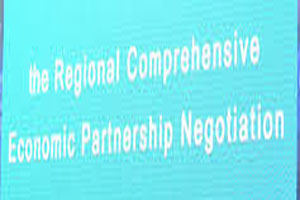
Vietnamese made textile product may lose tariff advantage with RCEP coming in force
YarnsandFibers News Bureau 2014-11-02 11:00:00 – VietnamVietnamese-made textile products at present enjoy a preferential tariff in Japan due to ASEAN+1 (ASEAN plus Japan) and the Vietnam-Japan Economic Partnership Agreement as similar items from China are subject to 15-20% tariffs.
Preferential tariffs may no longer be a competitive advantage for Vietnamese goods over those from China in the Japanese and South Korean markets after the Regional Comprehensive Economic Partnership (RCEP) agreement is signed.
The 10 member states of the Association of Southeast Asian Nations (ASEAN) are in negotiations with six other countries – China, Japan, South Korea, India, Australia and New Zealand – over RCEP, which may be finalized by the end of next year.
Once RCEP comes into force, domestic companies might grapple with difficulties. When Japan and China ink an agreement on export-import duties within the RCEP framework, Vietnamese goods would certainly lose the competitive advantage of tariffs in Japan. Other underdeveloped countries like Laos, Cambodia and Myanmar will face the same issue.
RCEP, on the other hand, will bring some advantages to Vietnam. Claudio Dordi said based on six agreements within ASEAN+1, goods from ASEAN countries must have a regional content ratio of at least 40% to get preferential tariffs when they are exported to Japan, South Korea and India.
Meanwhile, inputs for Vietnamese-made products are mainly from China; therefore, the three nations do not accord Vietnam low tariffs. If RCEP allows the 16 participating countries (including China) to add input value, Vietnamese goods can enjoy preferential tariffs on the Japanese market.
In addition, as for commitments to services market openness, laborers of the RCEP countries can move freely among the 16 nations, which ASEAN members including Vietnam will have to cope with. Claudio Dordi, technical assistance team leader of the European Trade Policy and Investment Support Project (EU-MUTRAP), said that the country should be aware of the rule on material origin and the transfer of labor when negotiating RCEP.
RCEP will be in harmony with agreements and regulations stated in the ASEAN+1 deals in terms of rules on material origin, trade facilitation, removal of trade barriers and decrease of tariffs.
Negotiations on RCEP started last year following the initiatives of China and Japan. Until now, ASEAN and six partner countries have organized five rounds of talks and two ministerial meetings within the framework of the ASEAN economic ministerial meetings in 2013 and 2014.
The participating countries have set up seven working groups and four subcommittees to make recommendations and suggestions and to consult one another in fields under negotiation, especially trade , services and investment.
The 16 parties agree to negotiate seven fields including trade , service, investment, economic cooperation, intellectual property and dispute resolution. They also discuss other issues on the principal of consensus. RCEP has many open regulations, allowing other countries to join even after the conclusion of negotiations.
Claudio Dordi at the conference in HCMC last weekend said that he did not know the extent to which the 16 parties of RCEP would open their markets as negotiations are ongoing.
Market Intelligence
Ask for free sample Report

experience
Customer Base
dedicated team
Countries Served Worldwide









